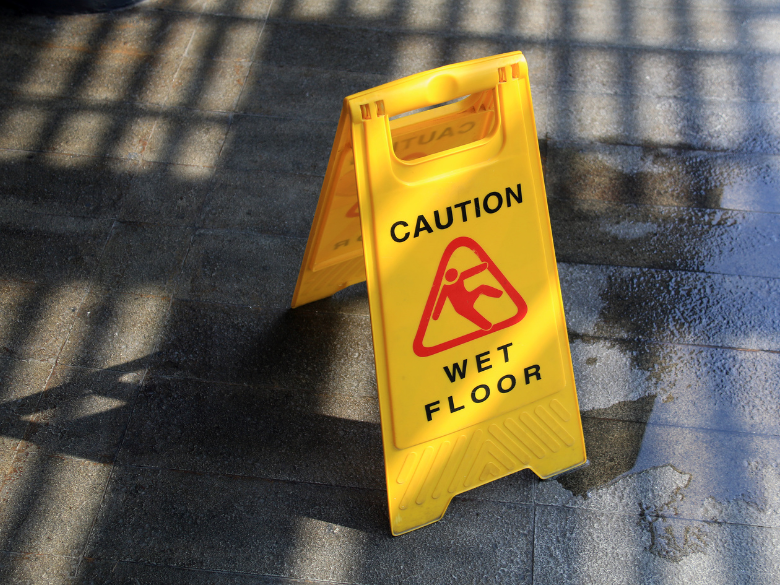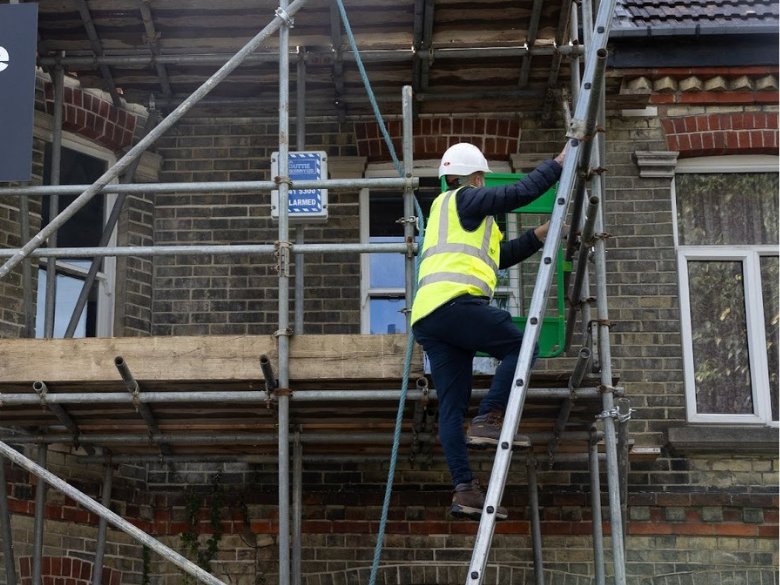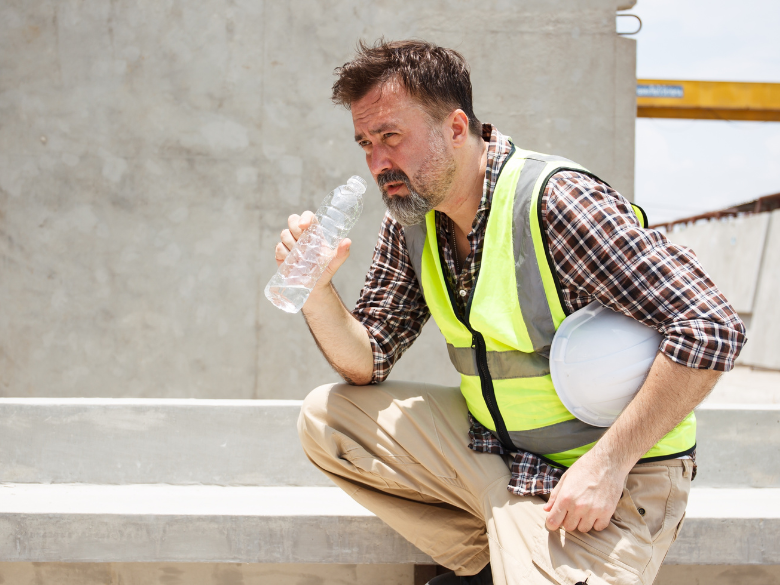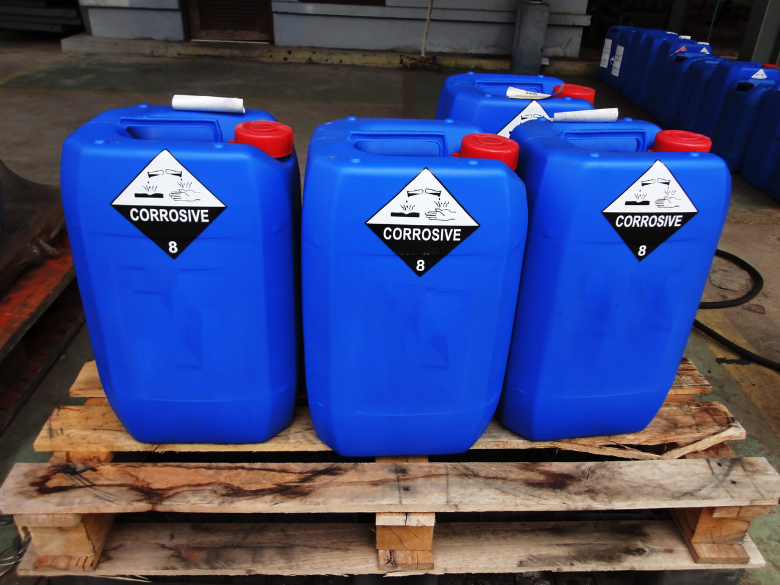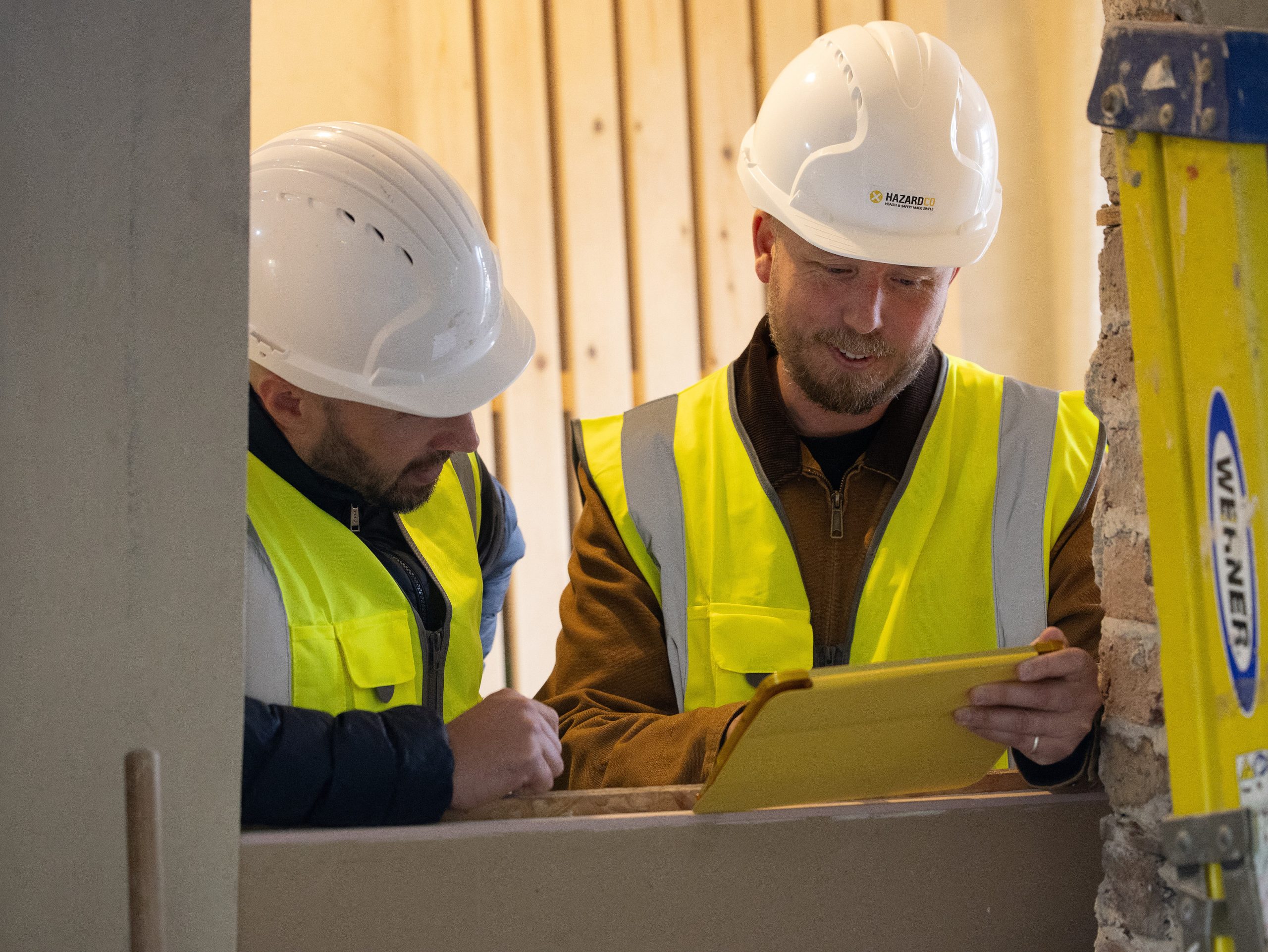
Good health and safety isn’t about stopping work — it’s about having simple, clear processes so everyone understands how to get the job done safely.
When you plan the work and manage the risks, you build a site where safety becomes second nature.
Before starting any task, take a moment to check your RAMS and assess the actual conditions on site. A short pause now can prevent accidents and keep everyone safe.
If it’s not recorded, it’s easy to miss and hard to manage.
A clean, well-run site is a safer site. Regular checks keep everyone on track.
Good sites don’t just happen, they’re reviewed and improved every day.
Safety isn’t a box to tick, it’s how you work.
When everyone takes action, speaks up, and looks out for each other, safety becomes part of everyday work, not just an extra task.
Construction sites come with plenty of obvious hazards but some of the most dangerous ones are the ones you can’t see. One of those hidden risks is respirable crystalline silica dust (RCS).
If you’re cutting, grinding, sanding, or polishing materials like concrete, stone, brick, or mortar, there’s a good chance you’re creating RCS dust. And while it might not look like much, breathing it in can cause serious, long-term health problems.
When silica dust gets into your lungs, it can cause a disease called Accelerated Silicosis. This is a fast-acting, life-threatening condition that scars the lungs and makes it harder to breathe over time. The tricky part? You might not even notice symptoms until the damage is already done.
That’s why it’s so important to understand the risk and take simple steps to control it.
The Health and Safety Executive (HSE) recommends several ways to reduce exposure and keep your crew safe:
Most people who develop silicosis didn’t realise they were at risk. That’s why it’s vital to talk about RCS, train your team, and make sure everyone knows how to stay safe.
At the end of the day, the goal is simple: everyone goes home safe and healthy.
Want to learn more about managing silica dust on-site? Get in touch with the friendly team at HazardCo. We’re here to help you keep health and safety simple.
Slips, trips, and falls, don’t let them take you down! Evaluating safety in your workplace is key!
Slips and trips might seem harmless, but on-site they’re one of the biggest causes of injuries. A bit of ground clutter, a wet floor, or poor lighting is all it takes to put someone out of action.
Here’s the breakdown:
What’s your role?
Businesses must make sure slip and trip hazards are spotted early and dealt with properly. That means checking the site, managing risks, and keeping controls up to scratch.
How to tackle the risks
Practical ways to reduce the risk
Reducing slips, trips, and falls starts with simple, practical steps that everyone on site can take.
Good housekeeping makes all the difference. The HazardCo App has handy checklists to keep your site tidy and safe.
Don’t wait for a near miss to remind you. Start managing slips and trips today and if you need a hand, the HazardCo team is only a call away.
The reality is unsafe work at heights can have devastating consequences. Falls from heights are one of the leading causes of fatalities and injuries in the construction industry within the UK. Preventing falls should be actively managed so that people working at heights are kept safe.
Identifying a task that could lead to a fall is the first step to keeping people safe. Before commencing, put in place the highest level of protection possible to prevent falls.
Consider how long the job will take: The duration of the job will impact how you select the level of protection. If the job is ongoing, the structures chosen need to remain stable throughout the job. You may need to reassess things like ladders and scaffolds throughout the job.
The hierarchy of controls outlines the various controls in order from the highest level of protection to the lowest level of protection. Select the safest, most appropriate control measure from the below hierarchy to prevent injuries or fatalities from falls from heights on your site.
Work on the ground or solid construction
If you can avoid working at height it should be your first option and is always the safest option. Some examples of eliminating the fall risk include using long-handled tools, relocating the task to the ground, and using extension poles for tools.
Use fall-prevention measures
If working from a height is necessary, you need to manage the risk of a fall. Fall prevention measures could be something like an elevated work platform, scaffolding, or guard railing.
Use a work positioning system
Check if a work positioning system like a travel restraint system can be used. A travel restraint system enables a person to work in a way that prevents the person from falling e.g. fixed-length lanyards and static line systems
Use a fall arrest system
Check if a fall arrest system like an industrial safety net, a catch platform or safety harness can be used. This system doesn’t prevent the fall but arrests the fall so you don’t come into contact with the ground e.g. shock absorber on lanyard or anchor point.
Ladder use
It may be appropriate to use a ladder. Ladders do not provide fall protection and as such should only be looked at as a last option when selecting the level of protection. Ladders should only be used for short duration works such as changing a light bulb or paint touch-ups.
Click here to view the HSE step by step guide
Seek professional assistance
Working at height can often be high risk and there are experts who make it their job to complete this work safely. It is often safer and more cost-effective to use height specialists even for shorter jobs.
Make sure everyone knows what to do
Give your workers all the info they need to stay safe.. Conduct toolbox talks and remind them the importance of procedures and completing a Risk Assessment and Method Statement. Encourage them to watch out for each other and speak up if something doesn’t seem right.
Consistency is key
It’s important you and your team are actively involved in ensuring any heights related work is carried out in the safest way possible.
If someone on your team is working by themselves without other people around and without direct supervision, they’re likely considered a lone worker. Whether it’s a regular thing or just every now and then, it’s your job to make sure they’re safe and supported.
It’s not just remote bush jobs. Lone workers might be team members who:
If this sounds like anyone on your team, there are a few key things you need to think about:
While employing lone workers is permitted under UK legislation, employers retain a legal duty of care towards these individuals. Current regulations require that you take all steps that are ‘reasonably practicable’ to guarantee workplace safety for your staff. As an employer, you must consider:
Lone workers may face more risks, both to their own safety and the equipment or materials they’re using. You need to make sure they’re prepared and protected.Vulnerable workers like apprentices and inexperienced workers shouldn’t be working alone.
Working solo can be lonely. No banter. No team catch-ups. It takes a toll.
Stay connected with regular check-ins like phone calls, group chats, or video calls. It doesn’t need to be fancy, just make it consistent. A quick “How’s your day going?” can go a long way.
Just because someone’s working away from the team doesn’t mean they should miss out on training, updates, or important info. Keep the comms flowing so everyone’s in the know – no matter where they are.
Make sure lone workers have the tools and tech to get the job done safely and stay connected. That includes:
Simple, but it works. Pair your lone workers with a buddy – someone they can check in with daily. Share location, talk through the day’s work, and have a bit of a yarn. It keeps morale up and helps you respond faster if something’s not right.
Create straightforward emergency plans that outline actions to take during incidents such as accidents, health issues, or other urgent situations. These plans must be easily available to lone working staff and updated on a regular basis..
Make sure your team knows what the plan is and how it works. Test it out, and keep emergency contact info up to date.
At the end of the day, look out for your lone workers the same way you would if they were right there beside you. A bit of planning and a good dose of communication make a big difference.
Need help?
If you’re a HazardCo member, the Advisory Team is just a tap away in the app. We’re here to keep things simple and help you keep your team safe, wherever they’re working.
Want an easy way to make your workplace safer without spending a penny? Here’s a simple trick that takes just 30 minutes and can help prevent incidents on the job.
During your next Toolbox talk, get everyone to list their top workplace hazards—the things that could go wrong and cause injuries. This could be anything from slippery floors to dodgy equipment or working at heights.
Once everyone’s shared their list, use the HazardCo Toolbox Meeting feature to record and combine the results into a master list of the biggest hazards in your workplace. This makes sure nothing important gets missed and gives your team a clear safety focus.
Now that you know the biggest risks, it’s time to do something about them. This list can help your workplace:
By using HazardCo’s Toolbox Meeting feature, all of this is tracked and recorded, so your team has solid proof of what’s been done to make work safer.
Incidents at work can be serious, but most of them can be prevented. This simple 30-minute exercise gets everyone involved, so safety isn’t just a rule—it’s part of the way your team works. Plus, with HazardCo’s easy reporting tools, you can keep improving and stay ahead of risks before they become real problems.
So next time you’re in a toolbox talk, speak up—your input could stop someone from getting hurt.
If you have any questions, reach out to the HazardCo team. We are always happy to help.
Summer is here – longer days, sunshine, and the outdoors sound like the perfect conditions to get all that work done but with summer comes a new set of risks you’ve got to stay on top of. Have you thought about what you are doing to protect your team from the effects of the summer sun and heat?
Stay cool, seek shade and stay safe to minimise the risks of sunburn and skin cancer, but we also need to be aware of heat exhaustion, dehydration and fatigue.
Heat exhaustion can sneak up on you when you’ve been sweating a lot and not replacing your fluids. If it’s not treated early, it can lead to heat stroke, which is much more serious.
Heat stroke occurs when the body can’t keep itself cool causing a high body temperature of 39.4 degrees or more.
Heat rash and heat cramps are the early stages of heat exhaustion. Knowing the signs and what to do will help prevent the onset of heat exhaustion or worse, heat stroke.
If you’ve got a health condition that could be made worse by extreme heat, have a quiet word with your manager or supervisor so they can help you manage it.
Make sun safety part of your Toolbox Talks during summer, it’s an easy way to remind the team about the risks and what to do about them. You can record your talk straight into the HazardCo App.
Got questions or want to talk about how heat could impact your work? Give our Advisory Team a call on 020 4571 3920 (option 3), we’re here to help.
Get your team scanning in and out – it’s a no-brainer!
We get it, health and safety chats aren’t always the most exciting. But they are the most important. When everyone on-site takes part, it makes a big difference. And the easiest place to start? Get your team and subbies scanning in and out of site each day.
Your HazardCo QR code (on your Hazard Board) makes it quick and easy and the benefits stack up:
Scanning in each day is also a good nudge to stay switched on about safety. The more we talk about it, the more we act on it, spotting hazards and taking care of each other.
It also helps you:
Need help getting the team onboard? Try this:
There’s no downside, scanning in is fast, easy, and helps everyone go home safe. Got questions? Get in touch with the HazardCo team. We’re here to help.
COSHH is a key regulation in the UK that helps protect workers and the environment from harmful substances. Managing these substances properly on-site is essential for everyone’s safety.
What are hazardous substances?
Hazardous substances can harm people or the environment. These include:
Understanding what substances are present in your workplace is crucial for ensuring safety. If you use hazardous substances at work, you must store, use, transport, and dispose of them safely to reduce risks.
What is a hazardous substances register?
A hazardous substances register is a list of all dangerous substances (and hazardous waste) used, handled, or stored at your sites. It helps you:
Keeping a COSHH register
While a COSHH register isn’t legally required, it’s a helpful tool. It’s not the same as a COSHH assessment (more on this below) but lists the substances you’ve assessed, including:
Review your register regularly to keep it accurate and up to date.
How to create a COSHH register
HazardCo members can use the Hazardous Substances Register template in the HazardCo Hub to make this process simple.
What is a Safety Data Sheet (SDS)?
An SDS provides important details about hazardous substances, such as:
It’s the business owner’s responsibility to keep SDSs updated and ensure workers can access them.
COSHH assessments
COSHH assessments are legally required for any hazardous substances. These assessments evaluate risks and outline control measures. Here’s how to do one:
Need help?
If you need support with your hazardous substances register or want more information, contact the friendly HazardCo team – we’re here to help!
Lithium batteries are common in everyday life and on the worksite, their lightweight, long life, interchangeability and quick charge benefits mean that they are now used in everything from laptops to power tools to EVs. But did you know that they pose a significant risk and need to be a part of your health and safety plan?
Lithium batteries of all sizes have the potential to overheat and catch fire. The fire is hotter, harder to put out and the smoke from these fires is incredibly toxic. Lithium batteries generally overheat if they get wet, damaged or are used with incorrect charging equipment.
Damaged batteries can explode at any time giving off flames that burn anywhere between 500 and 1000 degrees celsius. These fires are very difficult to extinguish as both water and CO2 will only suppress the fire, not extinguish it. Even if the fire has been suppressed it can still ignite again if the battery still contains energy to burn. Lithium batteries are also prone to thermal runaway, which is where one small fault can spread quickly through the battery causing a rapid increase in temperature and potential explosion.
Because of this, lithium batteries need to be properly cared for according to the manufacturer’s instructions to minimise the risk, aside from that, you need a plan in place in case of a fire.
Hot tip: The bigger the battery the bigger the risk of fire and explosion because of the increase in stored energy being released, think energy in = energy out almost instantly so take extra care with larger battery packs – like the ones in your hand held power tools.
Never dispose of Lithium batteries in general rubbish as it can result in a fire in your bin or on the way to a transfer station, creating a risk to those transporting them. The manufacturer should be able to advise safe disposal or check out your local battery recycling centre.
Lithium batteries are going to continue playing a crucial role in our workplaces and lifestyles, so it’s necessary to recognize the potential hazards associated with them. By having awareness of these risks and good practices, we can work together to reduce the potential dangers, resulting in safer working environments where Lithium batteries are used.
If you have any questions, get in touch with the Hazardco team today!


